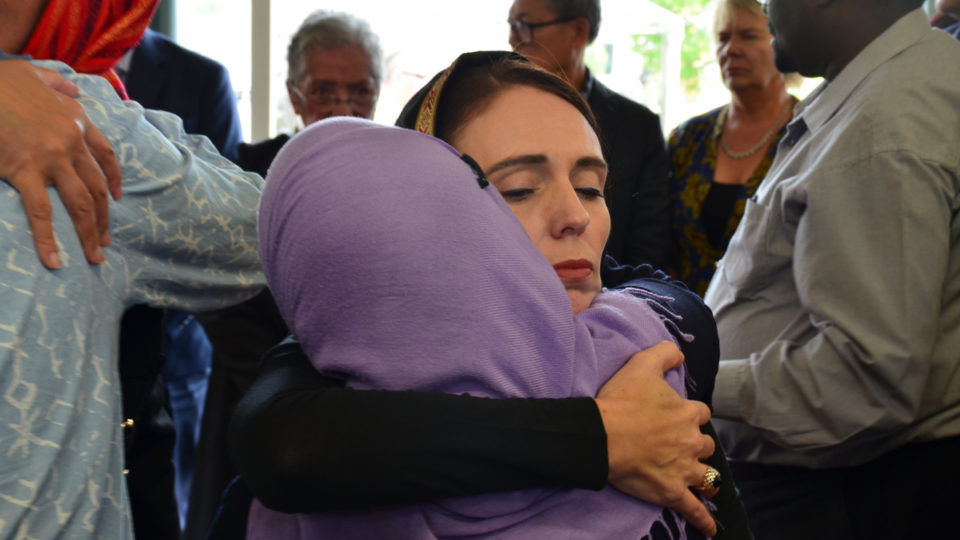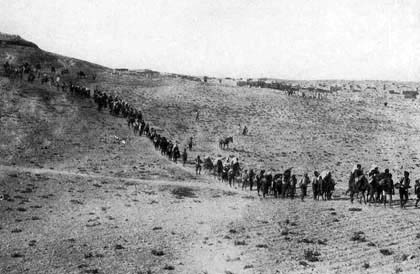In early April, on the very same day that the New Zealand parliament overwhelmingly voted to ban semi-automatic weapons, a man wearing a Trump t-shirt stood outside the Masjid Al Noor in Christchurch, swearing and shouting abuse against Muslims, trying to desecrate the memorials piled high outside the gates. Two armed police officers, tasked with guarding that place of worship, stood by and let it happen. When challenged by a member of the public, one cop said: “This is New Zealand, mate…he can say whatever he wants.”James Robins, an award-winning journalist and historian, researching the connections between Australia, New Zealand and 1915, wrote a piece for Agos readers on New Zealand's current political climate.
It has been a month since a self-declared fascist carried out an atrocity at two mosques in that city – perhaps the most severe right-wing terror attack since Anders Behring Breivik’s killings in Norway in 2011. The alleged killer now must undergo mental health assessments before he stands trial, charged with fifty counts of murder, and thirty-nine counts of attempted murder.
When confronted with an unprecedented, horrifying single-handed pogrom, the immediate emotional reactions to the news of March 15th were those of shock, hurt, and unbearable grief. In rare examples of public unity, New Zealanders solemnly gathered in parks and squares to show their solidarity with the nation’s small Muslim community. Rallies, demonstrations, and meetings lasted for two weeks. Human chains were formed around mosques everywhere, to protect them. Condemnation from every major political party was swift and unequivocal. The gentle Islamic greeting as’salaam alaikum became common on the lips of New Zealanders, many of whom have never said it before in their lives.
These displays of unity and sympathy were led by Prime Minister and Labour Party leader Jacinda Ardern, who did not think twice about putting on a headscarf to grieve with the victims’ families, or to give a sombre speech in Christchurch on a national day of remembrance, one week after the attack. "Speak the names of those who were lost rather than the man who took them,” Ardern told parliament on March 19th. “He may seek notoriety, but we in New Zealand will give him nothing, not even his name.”
Ardern’s earnest and humane leadership in this moment of crisis has rightly been considered an example to the world, especially when so many political leaders are encouraging the very same fascist forces that inspired the Christchurch terrorist, or used the atrocity to their own cynical gain. But now that the dust has settled, and the tears have slowed, it’s become clear that both politicians and the public have been negligent in paying attention to the threat of growing fascist violence. They underestimate its influence, and the damage it can cause. Radical politics (of either wing) is alien to this country.
Despite the terrorist claiming in his ‘manifesto’ that he planned the attack for three months, his name was not on any Australian or New Zealand security services watchlist. Nor did he come to the attention of intelligence agencies in Turkey and Europe, despite his extensive travels and donations to far-right political groups. For too long, the single focus of New Zealand’s security agencies has been ‘Islamist’ or ‘jihadi’ terror. In other words, they were too busy spying on Muslim communities like those of Christchurch, and missed the fascist standing outside their doors.
And in the last month, it has also become clear that the immense and powerful demonstrations of unity and sympathy may have succeeded in bringing heart and hope to the Muslim community, but they failed to intimidate fascists and their sympathisers. Disturbingly, they are not cowering in fear, but feel invigorated and empowered by the attack – proud of the fact that one of their own was so ‘successful’.
Just three days after March 15th, a man stood outside an Islamic centre wearing a swastika - he was not charged with any crime by police. Anti-Islam and anti-semitic posters reappeared on the campus of the University of Auckland. White supremacist pamphlets were distributed around some Auckland neighbourhoods. More than 25,000 people signed a petition insisting there was nothing wrong with Christchurch’s largest sports team being called the Crusaders. Veterans of the armed forces threatened boycotts if the ezan was heard at Anzac Day ceremonies. Various gun clubs and shooting ranges around the country have come under closer interrogation as ‘safe spaces’ for those with hard-right politics. And then, just hours before parliament passed its semi-automatic weapons ban, the man in the Trump t-shirt was allowed to walk away from the scene of the crime without so much as an unkind word from a policeman standing guard (though he was later charged with ‘disorderly conduct’).
The New Zealand press has also been struggling to make sense of the attacker’s ideology or use the correct terminology to describe it. They call him as a ‘terrorist’, or a ‘shooter’, or sometimes a ‘white supremacist’. But this is incorrect. The most apt term to use – one that the killer himself uses – is ‘fascist’. Some media have even conducted ignorant interviews with one of the most notorious fascist organisers in the country (a man named Kyle Chapman), failing to understand that greater media attention, and the chance to distort the discourse, is precisely what their movement desires.
The spectre of fascism no longer looks like it used to. The torch-lit rallies of Charlottesville were an exception. They don’t wear uniforms anymore, use the vanguard party form to organise, or explicitly say what their goals are in public. They have migrated (so to speak) online, and hide behind dense layers of irony. They organise and recruit and indoctrinate in sewers like 4chan and 8chan and rely not on the street violence of the 1930s and 1950s but sporadic ‘lone-wolf’ shootings like that in Christchurch, or Pittsburgh, or Utøya.
We would like to believe that the Christchurch atrocities were a once-in-a-generation event. That we will not have to face this kind of horror again. That our protests and our solidarities rallies were symbol enough of our opposition to fascism. But in order for that hideous ideology to be defeated, we must keep the defiant spirit of the aftermath alive in our hearts. For as long as it takes.





